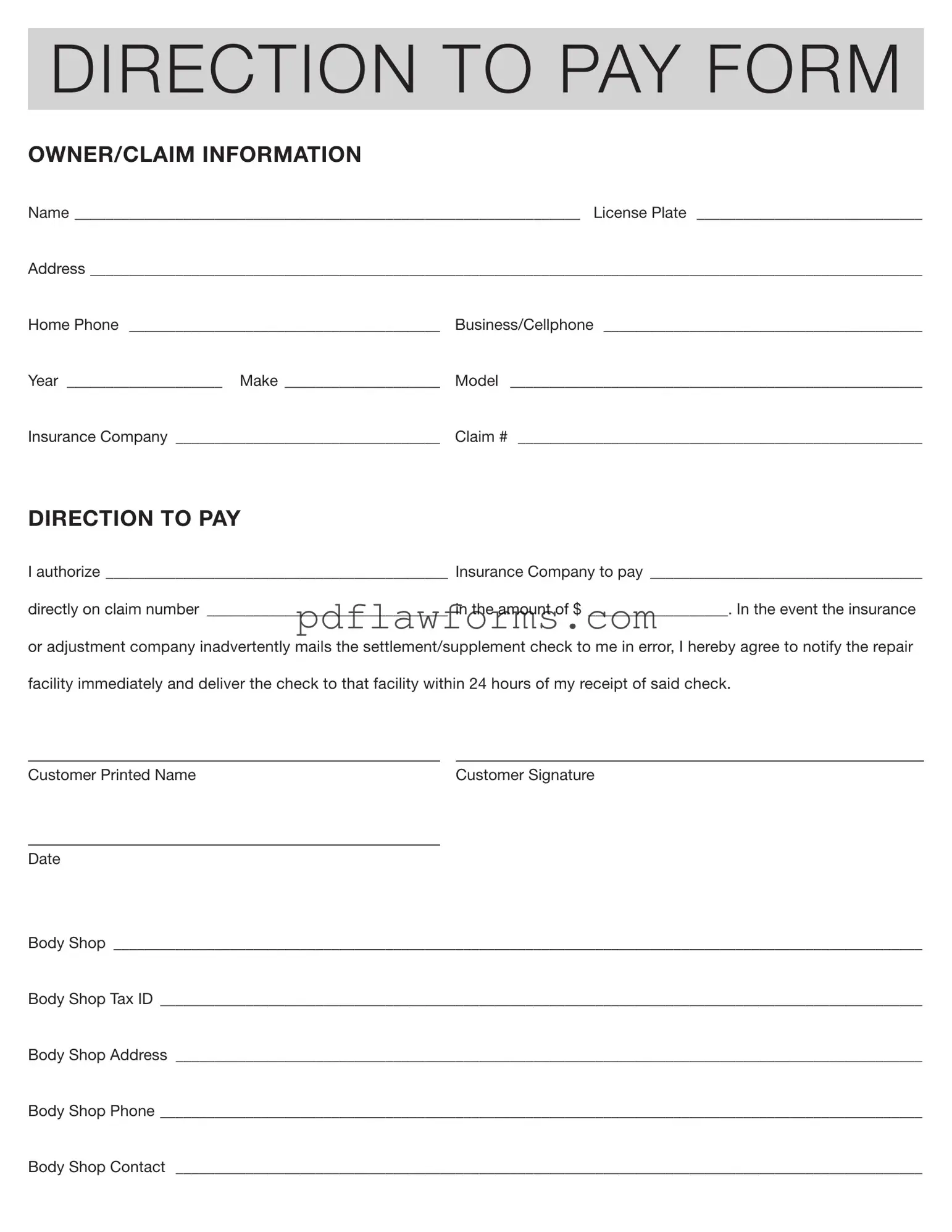The Authorization And Direction Pay form serves as a crucial document in the claims process between vehicle owners and insurance companies. This form allows the vehicle owner to direct their insurance company to pay a specific repair facility directly for the costs associated with a claim. Essential information such as the owner's name, license plate number, and contact details are required, along with specifics about the vehicle, including its make, model, and year. The form also captures the insurance company’s name and claim number, ensuring clarity in the transaction. By signing this document, the vehicle owner agrees to notify the repair facility if they mistakenly receive any settlement checks, committing to deliver such checks to the facility within 24 hours. Additionally, the form includes fields for the repair shop's information, including its tax ID, address, and contact details, streamlining communication and payment processes. This straightforward approach helps all parties involved to stay organized and ensures that payments are handled efficiently.
